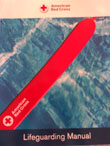These are links, quotations from articles for teachers or students on lifeguard training, swimming, CPR, first aid and risk management. They are primarily for current lifeguard candidates in my classes or graduates who are now lifeguard instructors. At the top of the page are links to free downloads of Red Cross textbooks.
The page is now quite long, so if you are looking for something in particular, I suggest you try using the EDIT-Find on This Page function on your computer to search for a key word like life, safe, swim, AED, CPR, scan, spa or the name of a person.
Click on it and download it.
The American Red Cross Swimming and Water Safety Manual
might still be downloadable for free. Go to
https://www.redcrosslearningcenter.org/s/candidate-water-safety
scroll down to Participant Materials and click on and open Swimming and Water Safety Manual.
The Cooper 12 minute swim test is on page 195, where it says “The 12-minute swimming test, devised by Kenneth Cooper, M.D., is an easy, inexpensive way for men and women of all ages to test their aerobic capacity (oxygen consumption) and to chart their fitness program.”
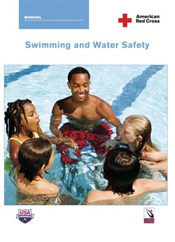
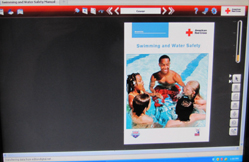
(The American Red Cross Swimming and Water Safety Manual had no index, so I wrote one: Swimming and Water Safety 2009 index).
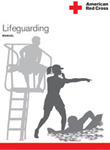 the 2012 Red Cross lifeguard manual is no longer in use.
the 2012 Red Cross lifeguard manual is no longer in use.
To get a free download of the copyrighted 2016, released 2017 American Red Cross Lifeguarding Manual go to:
https://www.redcrosslearningcenter.org/s/candidate-lifeguarding
scroll down to
Participant Materials (Core)
then click on and save
Lifeguarding Manual June 2017
– – – – – – – – – – – – – – – – – – – – – – – – – – – – – – – – – – – – – – – – – – – – – – – – – – – – – – – – – –
To make it easier to find the skills sheets pages write in your Red Cross Lifeguarding Manual
Lifeguard Training FAQs has details about the Red Cross prerequisite swim tests, including tips, tricks and advice for passing the swim test requirements for pool lifeguard, waterfront lifeguard and shallow water lifeguard, The page includes answers to these questions:
To become a lifeguard, do I have to have a perfect freestyle?
Do I have to be a fast swimmer? What if I’m out of shape?
Isn’t it difficult to rescue a heavy person who is sinking to the bottom of a pool?
Do lifeguards have to know how to dive?
What are the Red Cross certification written tests like?
How to rescue a drowning victim using a reaching assist or a shepherd’s crook for lifeguards or non-lifeguards
How to rescue a submerged victim
How to remove a victim from the pool
The aim of How to tell if the lifeguards are doing their job properly is to provide swimmers, parents, child care providers and other swimming pool patrons with a few guidelines to help them determine if the lifeguards at the pool they go to are doing their jobs properly.
_______________________

FAQ: One of the pools I swim at allows little kids with swim diapers. Do swim diapers or swim pants prevent fecal matter from entering the water?
According to the the Centers for Disease Control website the answer is “even though they may hold in some feces, they are not leak proof and can still contaminate the pool water.” For more go to
http://www.cdc.gov/healthyswimming/q_and_a.htm
and click on swim diapers and swim pants (and you can also find: E coli; diarrhea and pools; head lice, pinworm and swimming)
click on Aquatics staff you will find 12 steps for prevention of recreational water illnesses
This next section could be called the Get Ready to be the Head Lifeguard links:
lifeguard training, discussing professionalism is an in-service training project, or perhaps for lifeguard candidates who look at this page to consider on their own.
Should lifeguards wear cowboy boots? is a quiz for lifeguard classes or an in-service training
CPO What a certified pool operator (CPO) knows that lifeguards and swimmers should know.
NOT RESCUE READY Photos of lifeguards on duty who were not ready to rescue
Preventative Lifeguarding has notes from various staff manuals, personal experiences and the Red Cross texts. It includes UNSAFE PRACTICES or potential problems TO WATCH FOR, areas where most accidents occur and suggested disciplinary action for minor and major infractions.
Tips for guarding open water swims
tips for guarding kids’ triathlons
First Aid for Public Safety Personnel study guide
Swimming pool rules to choose from
Is your facility user friendly for all your customers? Take a look at an Americans with Disabilities Act, ADA Guide for Small Businesses:
https://www.ada.gov/smbusgd.pdf
backboarding mistakes quiz 1 page one
backboarding mistakes quiz 1 page two
backboarding mistakes quiz 1 page three
backboarding mistakes quiz 1 page four
backboarding mistakes quiz page five
canoe over canoe rescue can also be used on a kayak
California Lifeguards and Title 22
Neighborhood Watch applied to swim centers
First Aid for Public Safety Personnel study guide
Emergency Action Plan for a coach or swim instructor
Emergency Action Plan for a juvenile detention facility pool
If you lost your Red Cross certification card
first aid Secondary Assessment
Times to suspect a spinal injury (symptoms, causes, signs of spinal injury)
causes of fainting, altered mental status, sudden altered mental status, unconsciousness
Seizures, causes of and basic care for
Concussion signs and symptoms, prevention
AED quick facts includes detailed instructions to use an AED (automated external defibrillator)
What the AED says as you use it
How to pass a Red Cross written test
CPR Pro skills review questions
First Aid for Public Safety Personnel study guide
includes the basic questions to ask a suspected stroke victim ( Face, Arm, Speech, Time) and more.
Oxygen administration quick facts
Bloodborne Pathogens quick facts
Can a person who is prescribed an epi-pen risk going into the wilderness? (and some sting prevention notes) are at: Anaphylaxis quick facts
advance care directives includes a link to get a free copy of an advance care directive
Hands only CPR In a life-threatening emergency, doing something right is better than doing nothing at all. When a rescuer is unable, untrained or unwilling to perform full CPR, continuous Compression Only CPR can be effective in caring for a person with no signs of life.
The Red Cross has produced a video for people who have not been trained in CPR or who are not sure what to do.
Obviously, a professional rescuer would still use their higher level of training.
http://www.youtube.com/watch?v=m71yc5m8V38
Fifty ways to praise your swim students
Swimming and Water Safety 2009 index
pool toys for water safety instructors/swim teaching
How to blow giant bubble rings in a swimming pool
How can I tell if I’m a good swimmer?
Why you should wear a lifejacket.
U.S. Masters Swimming has tips for staying safe in open water https://www.usms.org/fitness-and-training/articles-and-videos/articles/how-to-stay-safe-in-the-open-water
Any instructor should make it a habit to check once in awhile at the Red Cross National website Instructors’ Corner at:
https://www.instructorscorner2.org/
If you have heard of a “cough cpr” e-mail that tells people they can save their own lives when they feel a heart attack coming on by coughing hard:
Please go to urbanlegends.about.com If you can get past all the pop-up advertisements, in the upper left hand corner type “cpr” in the search box, then click on cough cpr and read it. It seems that the original author retracted it.
For a second opinion go to americanheart.org and put “cough cpr” in their search box. You’ll get their word to Heart Assn. instructors.
The two are worth comparing.
_______________________
reading on preventing swimmer’s ear:
http://www.cdc.gov/healthywater/swimming/rwi/illnesses/swimmers-ear-prevention-guidelines.html
_______________________
The American Cancer Society has skin cancer prevention info at:
http://www.cancer.org/acs/groups/cid/documents/webcontent/003184-pdf.pdf
_______________________
Two articles at the New England Journal of Medicine website:
http://content.nejm.org/cgi/content/abstract/342/21/1546
is the New England Journal of Medicine article on which is best: cpr alone or cpr with mouth to mouth
http://content.nejm.org/cgi/content/abstract/343/17/1206?maxtoshow=&HITS=10&hits=
10&RESULTFORMAT=&fulltext=cpr&searchid=1032535765242_11943
&stored_search=&FIRSTINDEX=0&sortspec=
PUBDATE_SORTDATE+desc+Score+desc&journalcode=nejm
is the results of casino AED use
_______________________
Body piercings and lifeguards:
http://www.aquaticsintl.com/facilities/management-operators/saving-your-skin_o
_______________________
The Seattle Red Cross website quoted from the following article on women’s heart attack symptoms. Go to:
http://www.heart-help.net/women.html
and scroll down to heart attack women’s symptoms
_______________________
From THE PHYSICIAN AND SPORTSMEDICINE:
AED Trips a Canine Alarm
Last fall, the automated external defibrillator (AED) used by the Atlanta Braves created quite a stir when the team traveled to play the New York Mets.
John D. Cantwell, MD, an Atlanta cardiologist and a team physician for the Braves, recounts how the team and all its equipment had to pass a security clearance because of controversy surrounding Braves pitcher John Rocker. (Rocker’s inflammatory comments had been widely quoted.) “Everything cleared, then our equipment started beeping, and the bomb-sniffing dogs went ballistic,” Cantwell says. “It was the AED signaling that its battery was low.”
The moral: When traveling, make sure AEDs are fully powered, especially around bomb-sniffing dogs
_______________________________
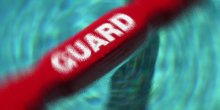
If you go to the NOLO Press website
and go to – Legal Research Center
State Laws
and search under California for the word lifeguard it gives you two pages:
the CALIFORNIA HEALTH AND SAFETY CODE SECTION 116025-116068
and the CALIFORNIA HEALTH AND SAFETY CODE SECTION 1797.160-1797.197 which includes AED info.
____________________________
The daily UV index map of the United States is at:
http://www.epa.gov/sunwise/uvindexcontour.html
____________________________

____________________________
How to Call 911 includes:
When you call 911 from a land line telephone, such as in your house, you get dispatch for the city the phone (your house) is located in. When you call 911 from a cell phone you most often get the Highway Patrol at a central location. Sometimes, especially if you are not calling about something on the freeway/highway, it would be faster to get dispatch for the specific city the problem is happening in. This requires knowing the direct dial seven digit phone number for each dispatch.
Direct dial emergency phone numbers for most cities in Santa Clara County, California, can be found at the Santa Clara County ARES/RACES (Amateur Radio Emergency Services/Radio Amateur Civil Emergency Services) website.
http://www.scc-ares-races.org/SCCoEmergencyNumbers.pdf
San Mateo County cities (and the San Francisco airport) direct dial phone numbers can be found at:
http://www.blackberryreact.org/smco911phones.html
When you are planning a camping trip, try to get the direct dial number for the park/Sheriff or agency in charge before you go.
At a hotel, be sure to find out if you need to dial 911 or 9-911 or 8-911 or . . .
In a lot of Canada you can dial 911 in an emergency just like in the U.S. But in other countries it’s often a different number. See this list from the U.S. Department of State and double check when you get there:
https://travel.state.gov/content/dam/students-abroad/pdfs/911_ABROAD.pdf
And note that in many other countries, when you call their emergency services (911 or 999 or 112 or a local number or ___ ) it does not necessarily mean an ambulance will be dispatched. The emergency services operator decides what’s appropriate, talking you through your own first aid, or sending you to your doctor or sending an EMT with or without an ambulance.
You can check your cell phone user manual to find out if you phone is pre-programmed to call 911. The Red Cross recommends “Callers should lock their keypad when they are not using their mobile phone. This action prevents accidental calls to 9-1-1.”
It wasn’t just an urban rumor. An article from the Consumer Product Safety Commission referencing hair entanglement, entrapment and disembowelment associated with spas:
https://www.cdph.ca.gov/HealthInfo/injviosaf/Documents/DrowningEntrapmentHazards.pdf
and see https://www.poolsafely.gov/wp-content/uploads/2016/04/pssa.pdf
In the waterfront lifeguard class we talk about gloving up to clean up the sand at a beach each morning. We talk about the occasional need to look for used needles when you rake the sand. Yet another hazard is from the National Park Service Morning report of Monday, December 29, 2003:
Dry Tortugas National Park (FL)
Employee Injury from Bang Stick Discharge
While on patrol along the beach at Garden Key on the afternoon of December 18th, ranger Tim Morrison discovered a stainless steel object approximately four inches long lying in the sand. Initial examination indicated that the object was possibly the nozzle to an air compressor hose. Morrison placed the object in his pants pocket and continued working the rest of his shift. Later that evening, he removed the object from his pocket to re-examine it. After looking it over, he set it down on a table, at which point it detonated. The discharge of what was later determined to be a .357 caliber round severely injured his right index finger and caused powder burns to his face. The Coast Guard was notified and airlifted Morrison to Key West Hospital at about 3:30 a.m. After several hours of surgery, doctors where able to clean and close the wound. A day later, Morrison was released by the hospital. Investigation revealed that the object was the end of a device used by scuba divers called a “bang stick.” In this case, it was made of stainless steel. The bang stick broke down into two parts by unscrewing it. Inside one part was a firing pin and spring; inside the other was the an empty casing to a .357 magnum round. The bullet embedded in the ceiling of Morrison’s quarters at Fort Jefferson. It only takes approximately two pounds of pressure to set one off and is usually used in conjunction with a long rod or stick. The device, when not attached to a stick, looks very benign. Morrison hopes this information prevents such an unfortunate incident from happening to anyone else.
[Submitted by Willie Lopez, Site Supervisor]

A study quoted in the January 2004 New England Journal of Medicine found that a hormone called vasopressin works much better than epinephrine for victims of asystole when given after attempts at defibrillation. Using vasopressin instead improved the chances of reaching a hospital alive by 40%, and it has less risks. An Associated Press article said that of the more than 60,000 people who die of cardiac arrest in North America and Europe each year, 70% will have ventricular fibrillation and about 30% will have asystole.
Read more at:
http://content.nejm.org/cgi/content/abstract/350/2/105
The latest on bloodborne pathogens is at:
http://www.osha.gov/SLTC/bloodbornepathogens/index.html
“Researchers at the University of Iowa and University of Michigan recently analyzed the value of installing defibrillators in various public locations. They determined that an AED is a good investment if its location was expected to be the site of at least one cardiac arrest every 7 years… Purchasing AEDs for sports-related sites–sports venues, golf courses, and health clubs–appears to be a good investment, the study found. Sites such as hotels, large retail stores, and primary care centers were found to have lower risks.”
Natural Resources Defense Council
Water Quality at U.S. Beaches
How to find out whether state and local authorities test for beach pollution, and what they do if they find it.
http://www.nrdc.org/water/oceans/gttw.asp
The U. S. Environmental Protection Agency has a beachgoer’s guide at:
http://www.epa.gov/waterscience/beaches/goer2.html
A summer of 2003 study of drowning in France found, (of 781 rescues followed by hospitalization or fatality),
44% in the ocean (56% of victims older than 45 years of age)
25% in swimming pools (61% in private pools)
15% in lakes (25% between the ages of 25 and 44)
12% in rivers (28% between the age of 25 and 44).
Of the 781 drownings, 41% were fatal.
California State Parks has Lifeguard/Ranger oral interview tips at their website
http://www.parks.ca.gov/default.asp?page_id=21271
including these sample interview questions:
Sample Questions for ‘Getting to Know the Candidate’
- Tell us about yourself and why you want this job.
What are you doing in your current position?
Tell us why you are qualified for this position?
What are your career goals?
How have you prepared yourself for this position?
According to EMS Magazine in 2004, AEDs aren’t just for adults. Over 300 children die yearly from preventable sudden cardiac arrest while playing sports.
The claims game
“When managing your claims paperwork, the 80/20 rule applies: 80 percent of all the incident data you gather will never be used; only 20 percent of the incidents that occur will turn into claims. The trouble is no one knows which 20 percent will be needed, so you must investigate and retain data on all incidents.”
http://www.recmanagement.com/features.php?fid=200410FE04

Access Cardiosystems, Inc. issued a Worldwide Recall of its AEDs in November 2004 due to the “ON/OFF” button and the shock delivery circuit failing to function as well as the AED possibly turning on suddenly.
Automatic External Defibrillators [AEDS]: Their Deployment & Use Within the Lifeguard, Aquatics Safety & Recreation Sector [Mar 26 2005]–
Gerald Dworkin says, in part:
“Although the performance of CPR on a cardiac arrest patient prolongs the time that defibrillation can be effective, CPR should not be considered as a “life saving” procedure, but rather as a “life sustaining” procedure in that it typically will not restore a heartbeat to a cardiac arrest victim.”
“The average response time from dispatch to scene arrival across the U.S. is approximately 10 minutes. Once the EMS personnel arrive on the scene, it may even take several additional minutes before they are able to make contact with the patient.
Roger White, a Mayo Clinic researcher and medical director for the early defibrillation program in Rochester, Minnesota measured to the second how much time passes between a 9-1-1 call and the instant a shock is delivered to a cardiac arrest patient. His data showed that victims shocked within six minutes almost always lived, while those shocked after six minutes almost always die.
Currently 95 percent of sudden cardiac arrest victims die before reaching the hospital due to the length of time it takes for emergency personnel to arrive on the scene. Dr. Joseph Ornato of Virginia Commonwealth University in Richmond states, “the bottom line is we believe defibrillators in public facilities will double survival, if there are trained teams to use them.” “
read it all at:
http://www.bigmedicine.ca/gdworkin.htm
Lifeguard training graduate and locally employed EMT Eric Marxmiller replied to the article:
“It fails to point out the % of people who where asystole and are un-shockable which would probably be
around the upper 80% to 90% of the patients treated by this ems.
It also points out that 95% of sudden cardiac arrest patients die before reaching the hospital DUE TO arrival
time of ems, that is wrong! People die regardless of how much or little time ems takes to arrive. They do
not report how many died in the field, in transport, or at the hospital. There is manipulation of data
here. What we can say without all the data is that AEDS do “HELP” and can sometimes “prolong life” but
not necessarily “quality” of life.”
http://www.sptimes.com/2002/08/27/TampaBay/Eckerd_College_settle.shtml
“Eckerd College settles suit in drowning at school pool
The suit alleged a careless lifeguard missed the drowning boy. Insurance will cover the $1.55-million payment.”
During the lifeguard management section of our class we discuss ways to remodel a facility to make it more user friendly for people with disabilities. Lots of resources are at:
http://www.usdoj.gov/crt/ada/adahom1.htm

http://www.ada.gov/lawenfcomm.htm has what percentage of speech reading (reading lips) by deaf people is understood (about one third of spoken words are understood) and practical suggestions for effective communication
_______________________
